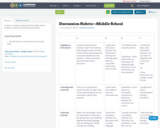
A rubric in student language used by middle school students to self-assess their discussion skills.
- Subject:
- Arts and Humanities
- English Language Arts
- History
- Social Science
- Material Type:
- Assessment
- Date Added:
- 06/22/2017

A rubric in student language used by middle school students to self-assess their discussion skills.
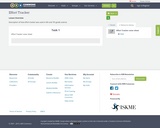
Description of how effort tracker was used in 6th and 7th grade science.
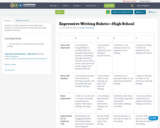
A rubric in student language used by high school students to create expressive writing that meets high standards of quality.
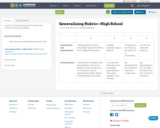
A rubric in student language used by high school students to assess generalizing.

A rubric in student language used by middle and high school students to assess how well they accomplish a group task that meets high standards of quality.
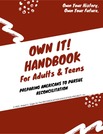
The “Own It!” Handbook for Adults & Teens is a step-by-step guide to a fourteen topic after-school program, such as a Boys & Girls Club, or an adult Community Building group. For adults, it seeks to bridge divides and explore what Americans have in common. For teens, it is a transformative after-school, trauma-informed enrichment program. It nurtures academic skills, personal growth and leadership. For all, it uses history to connect our past to our future, as part of the Own Your History® (OYH) Collection. Our inheritances from family history and the American experience provide the starting point for our personal journeys. Our individual stories are part of a complex American history. We each can choose consciously to write our life story and work for a greater future. Own It! is not “school” but enhances students’ engagement in being creative, making things happen, and achieving goals. Its mission is to help them step up and enrich their lives, especially by understanding that they live in history.
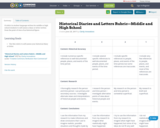
A rubric in student language written for middle or high school students to self-assess a diary or letter written from the point of view of an historical figure.
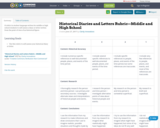
A rubric in student language written for middle or high school students to self-assess a diary or letter written from the point of view of an historical figure.
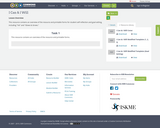
This resource contains an overview of the resource and printable forms for student self-reflection and goal-setting, including "Yet" and "Glows & Grows."
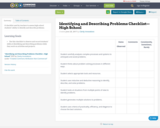
A checklist used by teachers to assess high school students’ ability to identify and describe problems.

A rubric in student language used by high school students to assess their ability to identify and describe problems.
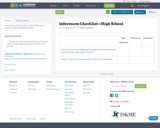
A checklist used by teachers to assess high school students’ skills at making inferences.
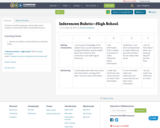
A rubric in student language used by high school students to assess their skills at making inferences.
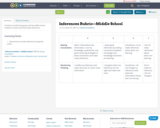
A rubric in student language used by middle school students to assess how they make inferences.

How we design professional development greatly impacts outcomes. This module addresses the incorporation of critical thinking and critical reflection skills into professional development sessions, with sections on cultural competency, incorporating participant self-assessment at the end of sessions using rubrics, and instructional design considerations when developing in-person sessions or online learning. It is intended to give an entry into these topics for anyone providing training in any setting.
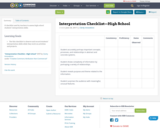
A checklist used by teachers to assess high school students’ interpretation skills.
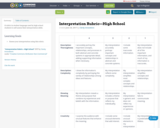
A rubric in student language used by high school students to self-assess their interpretation skills.
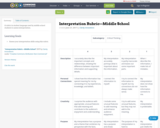
A rubric in student language used by middle school students to assess interpretation.
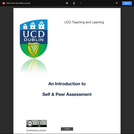
This publication accompanies the Assessment in Practice workbook. It provides definitions of practice, means to implement and an action plan for developing appropriate and effective assessment criteria for groups.
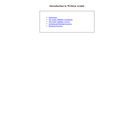
This website from the University of Victoria is intended to teach individuals the basics of the Arabic alphabet, including the correct pronunciation of letters and words. The website is broken into consonants and vowels, listening and reading exercises, and dictation. Section include an introduction, examples, and exercises and tests to ensure proper learning. Short vowels are also introduced in these lessons. Letter keys are provided for those not on a computer that allows for typing in Arabic.